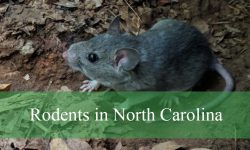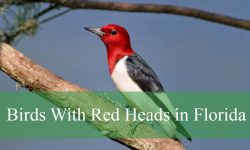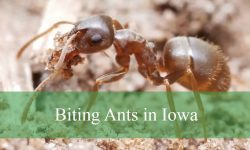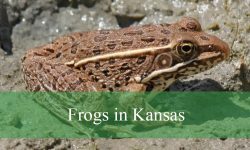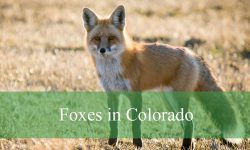Oregon’s wide and varied landscapes are home to several remarkable grouse species, each shaped by the forests, mountains, and deserts they inhabit. These secretive birds are known for their mottled feathers, rhythmic courtship sounds, and ability to disappear into the natural surroundings that protect them.
Grouse in Oregon occupy habitats ranging from dense conifer forests to open sagebrush plains. They feed on seeds, berries, and buds, serving as an essential link in the food chain for many of the state’s native predators. Their behaviors and seasonal movements reflect the diverse environments that Oregon offers throughout the year.
This guide introduces five types of grouse found across Oregon, describing their appearance, calls, habits, and preferred environments. Observing them in the wild reveals not only their beauty but also the health and diversity of Oregon’s natural ecosystems.
Different Types of Grouse Found in Oregon
Dusky Grouse (Dendragapus obscurus)
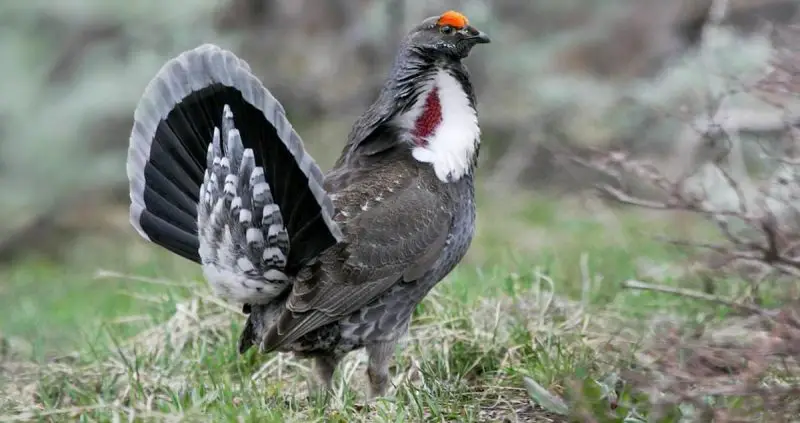
The Dusky Grouse, once grouped with the Sooty Grouse, is a large upland bird that thrives in Oregon’s higher elevation forests. It has a broad, rounded tail tipped with gray and a mottled body of brown and slate-blue tones. Males display a striking bluish-gray plumage with yellow-orange eye combs during the breeding season, while females remain well-camouflaged with mottled brown feathers for nesting concealment.
Adult males typically measure between 19 and 22 inches in length and can weigh up to three pounds, making them one of Oregon’s larger grouse species. They are known for their distinctive “hooming” calls that resonate through the mountain forests in spring as males display to attract mates. Their short, rounded wings and strong legs make them agile in flight for short bursts and capable of perching in trees, unlike many other ground birds.
Dusky Grouse primarily feed on buds, needles, berries, and insects depending on the season. In winter, they ascend to higher elevations where they feed heavily on conifer needles, particularly fir and pine. During summer and early fall, they descend to forest edges to forage on berries and seeds, often accompanied by their chicks.
In Oregon, this species is found throughout the Cascade Range, the Blue Mountains, and other high-altitude coniferous forests. They favor open forest areas with clearings and dense cover nearby, typically between 3,000 and 10,000 feet. The Dusky Grouse is a well-adapted mountain bird, a hallmark of Oregon’s rugged wilderness.
Sooty Grouse (Dendragapus fuliginosus)
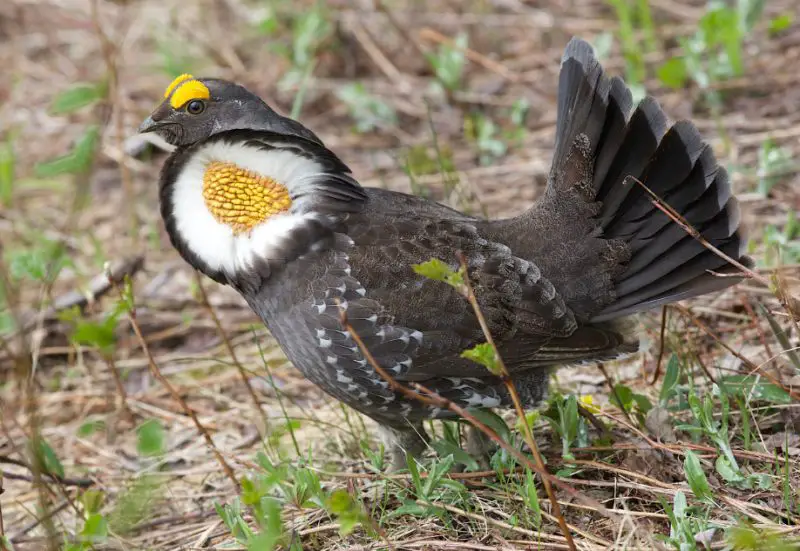
The Sooty Grouse is closely related to the Dusky Grouse but occupies more coastal and western mountain habitats in Oregon. It has darker, sooty-gray plumage and a broad gray-tipped tail. Males have a yellow wattle above the eyes and display yellow air sacs during courtship, contrasting with their smoky gray feathers. Females are brown and heavily barred, making them nearly invisible in the undergrowth.
Measuring about 18 to 21 inches long, the Sooty Grouse is a large, sturdy bird with a fan-shaped tail and feathered legs suited for colder climates. It is more arboreal than many grouse species, often roosting or feeding in tall conifers. During spring, males perform deep, booming calls that can be heard from long distances in mountain forests, signaling their territory to females.
Their diet includes pine and fir needles during winter and a mix of berries, seeds, and insects during summer. They are strong seasonal migrants, moving from lowland forested valleys in winter to higher elevations in summer for breeding. Their ability to adapt to changing elevations helps them survive Oregon’s variable weather patterns.
In Oregon, Sooty Grouse can be found along the Coast Range, the western Cascades, and other moist coniferous regions. They prefer mature Douglas-fir and hemlock forests, especially near clearings and forest edges where food sources are plentiful. This species is often seen along logging roads and hiking trails in early morning hours.
Ruffed Grouse (Bonasa umbellus)
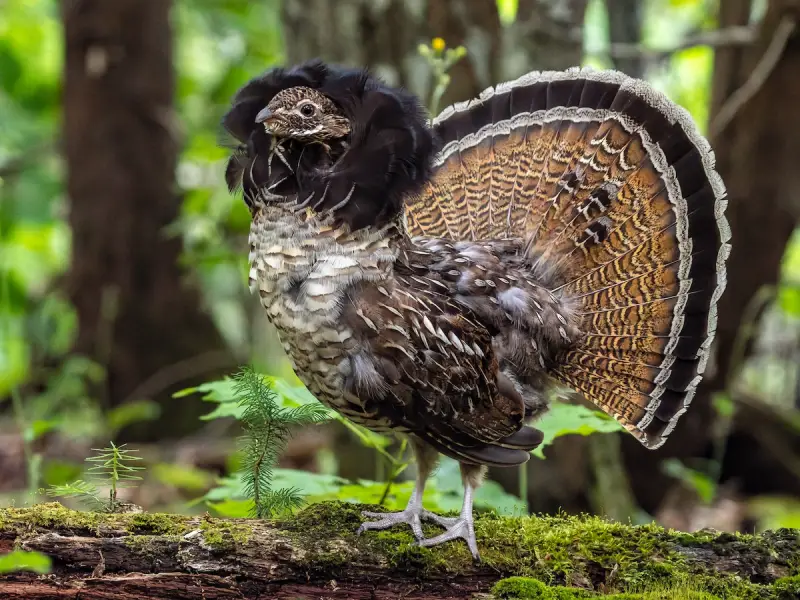
The Ruffed Grouse is a medium-sized bird best known for its spectacular drumming display. It has a mottled brown, gray, and rust-colored body with a fan-shaped tail that features a dark subterminal band. Males have a distinctive “ruff” of dark feathers around the neck that flares during courtship displays. Females look similar but slightly smaller and less vividly colored.
Ruffed Grouse measure about 16 to 19 inches long, with a wingspan of around 20 to 25 inches. They are compact birds with a plump body and short, rounded wings. Their drumming behavior—created by rapid wingbeats while perched on a log—is a signature sound of Oregon’s northern forests in spring. This low-frequency sound serves to attract females and establish territory.
The Ruffed Grouse feeds on buds, twigs, and leaves of deciduous trees, as well as fruits, acorns, and insects. Their favorite foods include aspen buds, rose hips, and clover. In winter, they often burrow into snow for warmth and protection from predators, an adaptation to Oregon’s cold mountain regions.
In Oregon, Ruffed Grouse are found mainly in the northern and northeastern parts of the state, favoring mixed forests with aspen, alder, and willow. They prefer habitats with dense understory for cover and open spaces for feeding. This species thrives where forest succession provides a mosaic of young and mature trees.
Spruce Grouse (Canachites canadensis)
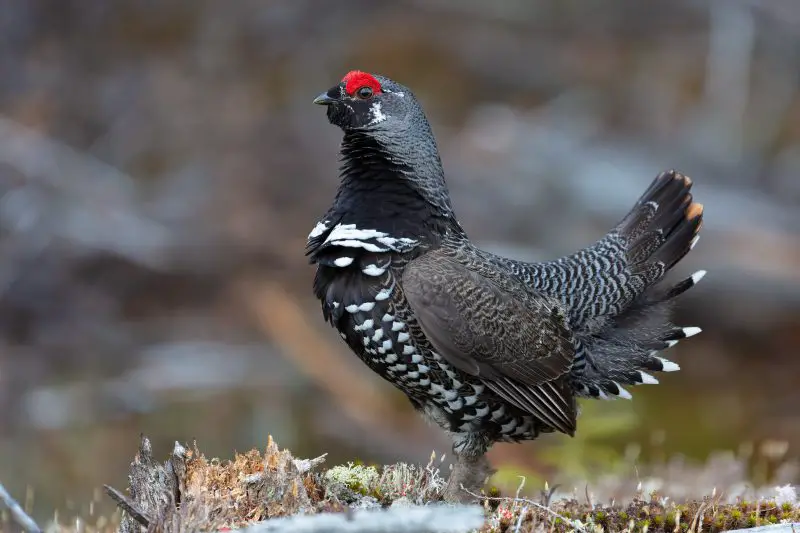
The Spruce Grouse, sometimes called the “Fool Hen,” is a rare resident of northeastern Oregon’s high-elevation conifer forests. Its plumage is a mix of dark gray, black, and white, providing excellent camouflage among spruce and fir trees. Males have a black throat, a red comb above each eye, and white-spotted breasts, while females are barred brown with a shorter tail.
This grouse measures between 15 and 17 inches in length, smaller than the Dusky or Sooty Grouse. They are known for their calm behavior and lack of fear toward humans, which earned them their nickname. When disturbed, they often freeze motionless or simply move a few feet away instead of flying, relying on their camouflage to avoid detection.
Spruce Grouse primarily feed on conifer needles, especially spruce and pine, but they also consume berries and insects during summer. Their digestive system is highly specialized for processing fibrous needles, which they eat almost exclusively in winter. The species spends much of its time in trees, where it finds both food and safety.
In Oregon, Spruce Grouse are limited to the Wallowa Mountains and the Blue Mountains, inhabiting subalpine spruce-fir forests above 4,500 feet. They require dense conifer stands with minimal human disturbance, making them one of Oregon’s most elusive upland birds.
Sage-Grouse (Centrocercus urophasianus)
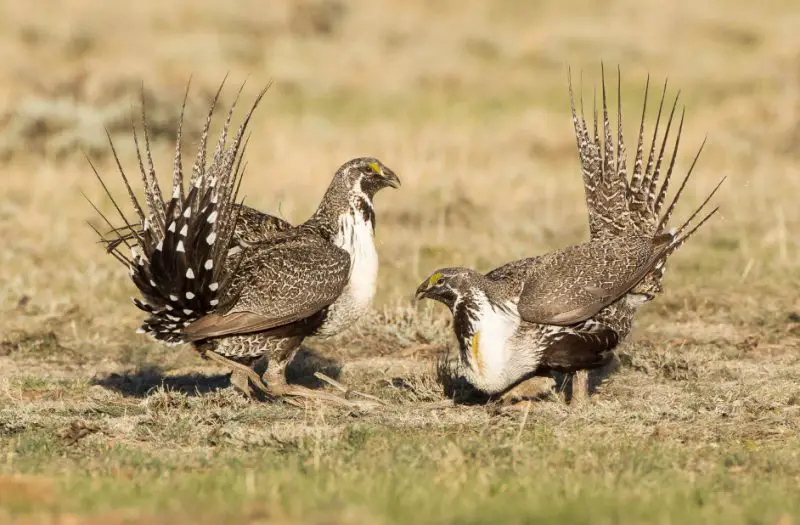
The Greater Sage-Grouse is Oregon’s largest grouse species and an icon of the high desert landscape. Males are striking, with grayish-brown plumage, a spiky tail, and large yellow air sacs on the chest that inflate during mating displays. Females are smaller and mottled brown, blending perfectly with sagebrush surroundings for nesting protection.
Adults can grow up to 30 inches long with a wingspan of over 35 inches, and males can weigh as much as seven pounds. Their elaborate courtship display, performed on open “leks,” involves males fanning their tails, puffing their chests, and producing distinctive popping sounds with their air sacs. This ritual is one of the most fascinating natural spectacles in Oregon’s desert regions.
Sage-Grouse feed mainly on sagebrush leaves, which form the bulk of their diet year-round. In spring and summer, they supplement their diet with grasses, forbs, and insects. They are ground-dwelling birds that rely heavily on wide expanses of intact sagebrush habitat for cover and food.
In Oregon, they inhabit the eastern and southeastern parts of the state, particularly in Harney, Malheur, and Lake counties. They prefer open sagebrush steppe with gentle slopes and limited tree cover. Due to habitat loss and fragmentation, the Sage-Grouse population has declined, but conservation efforts continue to protect this iconic species and its desert ecosystem.
How to Identify Grouse in Oregon
Identifying grouse in Oregon can be challenging because of their cryptic coloration and shy nature. However, each species has distinct traits that set it apart once you know what to look for. Here are some helpful tips:
Size and Shape: Sage-Grouse are the largest, while Ruffed and Spruce Grouse are smaller and more compact. Dusky and Sooty Grouse are intermediate in size but are larger than the Ruffed Grouse.
Tail Markings: Ruffed Grouse have a dark band near the tip of their fan-shaped tail, while Dusky and Sooty Grouse tails are gray-tipped. Sage-Grouse have long, spiky tail feathers used in courtship displays.
Habitat Preference: Grouse location can be a major clue. Sage-Grouse live in open sagebrush deserts, Ruffed Grouse in deciduous forests, and Dusky or Sooty Grouse in coniferous mountain regions.
Behavior: Sage-Grouse are often seen in open areas displaying in groups. In contrast, Ruffed and Dusky Grouse are solitary and more likely to be heard than seen, especially during their drumming or booming calls.
Best Places to See Grouse in Oregon
Oregon offers excellent opportunities for grouse observation throughout the year if you know where to go.
Cascade Range: Home to Dusky and Sooty Grouse, these mountain forests are prime areas during spring and summer. Look along forest edges, logging roads, and alpine clearings during early morning or dusk.
Blue and Wallowa Mountains: Northeastern Oregon hosts Dusky and Spruce Grouse in dense conifer forests. Birdwatchers can often spot them at higher elevations, particularly near subalpine fir and spruce stands.
Eastern Oregon’s Sagebrush Steppe: Greater Sage-Grouse inhabit Harney, Lake, and Malheur counties. Visiting lek sites at dawn during spring (March to May) offers the best chance to witness their spectacular mating displays.
Coast Range and Western Slopes: Sooty Grouse prefer coastal mountains and moist conifer forests west of the Cascades. Hikers may spot them along shaded trails in Douglas-fir and hemlock forests.
Northern Oregon: Ruffed Grouse can be found in mixed forests and riparian woodlands, especially where alder, aspen, and willow are abundant. Their drumming sounds in spring can guide observers to their territories.
Behavior and Diet of Oregon Grouse
Grouse in Oregon show fascinating adaptations that help them survive in varying environments.
Most species are ground-dwelling birds that rely on camouflage and stillness to evade predators. During spring, males perform elaborate courtship displays, using booming, drumming, or popping sounds to attract females. After mating, females nest on the ground, laying between 6 to 12 eggs in shallow depressions lined with grass and feathers.
Their diet varies seasonally. In winter, conifer-dependent species like Dusky, Sooty, and Spruce Grouse feed mainly on pine and fir needles. In summer, they switch to berries, leaves, seeds, and insects. Ruffed Grouse prefer deciduous buds, while Sage-Grouse rely almost entirely on sagebrush leaves year-round, an adaptation to Oregon’s arid eastern regions.
Conservation Status of Grouse in Oregon
While most grouse species in Oregon remain relatively stable, habitat loss and environmental changes pose ongoing challenges. The Greater Sage-Grouse, in particular, has suffered significant population declines due to the loss of sagebrush habitat, wildfires, and human development. Conservation efforts led by state and federal agencies aim to restore sagebrush ecosystems and protect critical lek sites for breeding.
The Ruffed Grouse and Dusky Grouse populations remain healthy in forested regions, but logging, road building, and recreation can fragment their habitats. Sustainable forestry practices and habitat preservation help ensure these species continue to thrive. The Spruce Grouse, being rare and localized in Oregon, benefits from conservation of high-elevation conifer forests with minimal disturbance.
Hunters play a key role in grouse conservation by supporting habitat management programs and following ethical harvest limits. Responsible wildlife viewing, especially avoiding disturbing lek sites and nesting areas, also helps protect these remarkable birds.
Tips for Spotting Grouse in the Wild
If you’re hoping to spot grouse in Oregon, patience and timing are essential.
- Go early: Dawn and dusk are the best times to observe grouse, as they are most active during these cooler hours.
- Listen carefully: The deep “booming” of Dusky and Sooty Grouse or the drumming of a Ruffed Grouse can lead you to their location.
- Stay still: Grouse often freeze when approached. If you move slowly and quietly, they may allow you a closer look.
- Use binoculars: Many grouse blend perfectly into their environment, making them easier to see from a distance.
- Visit during spring: Breeding season displays are the most dramatic and offer the best viewing opportunities.
FAQs About Grouse in Oregon
What is the most common grouse in Oregon?
The Dusky Grouse is the most widespread species, found throughout the Cascade Range and the Blue Mountains in coniferous forests.
Where can I see Sage-Grouse in Oregon?
You can observe Sage-Grouse in southeastern Oregon’s sagebrush plains, especially near lek sites in Harney County and the Steens Mountain area during spring mornings.
Are grouse active year-round in Oregon?
Yes. Grouse remain active throughout the year, adapting their diet and elevation range with the seasons. However, they are more visible during spring and early summer.
Can I hunt grouse in Oregon?
Yes, regulated hunting seasons exist for several grouse species, including Ruffed, Dusky, and Sooty Grouse. Hunters should check Oregon Department of Fish and Wildlife regulations for specific dates and limits.
Do grouse migrate?
Some species, like Dusky and Sooty Grouse, show altitudinal migration—moving up and down mountain slopes with the changing seasons rather than long-distance migration.


